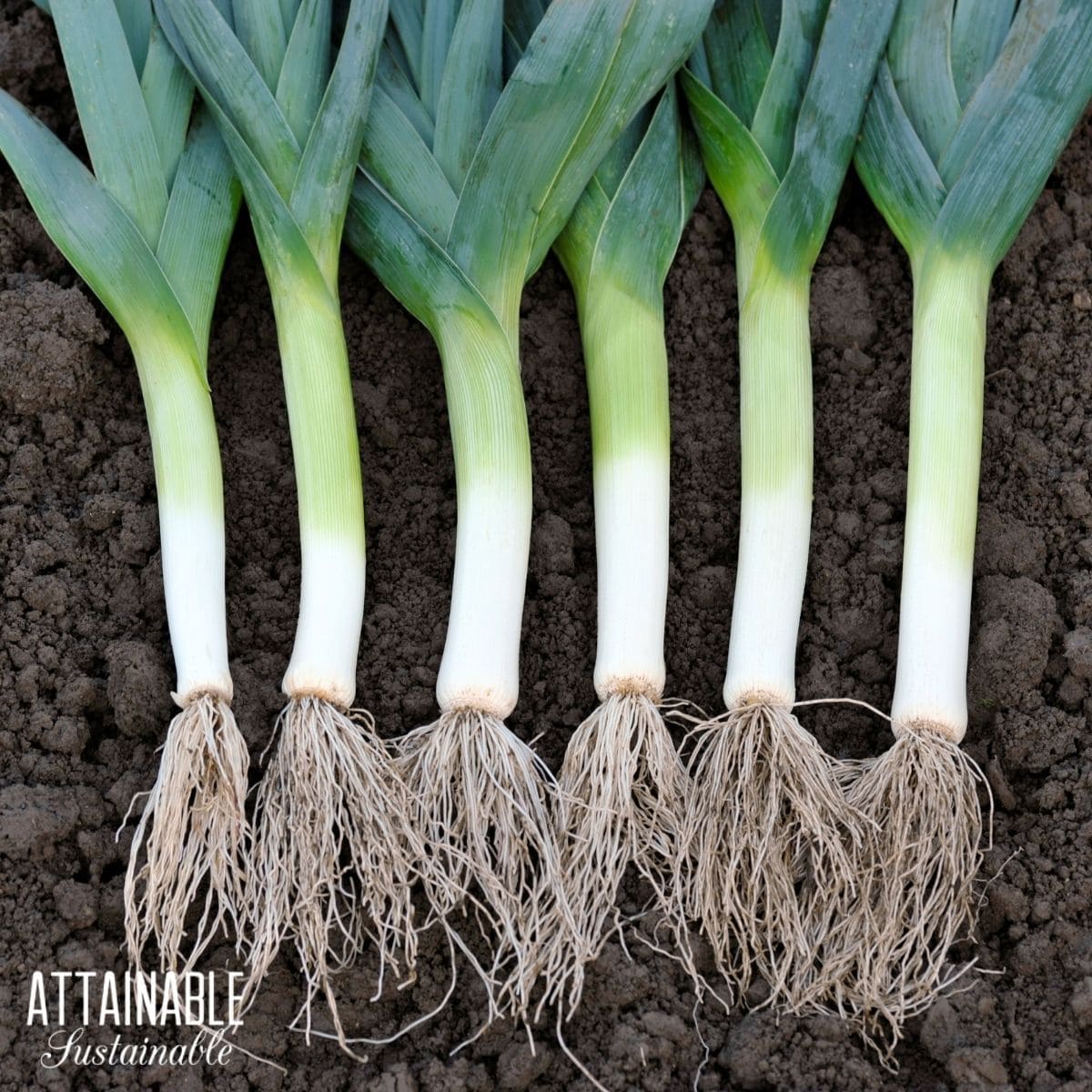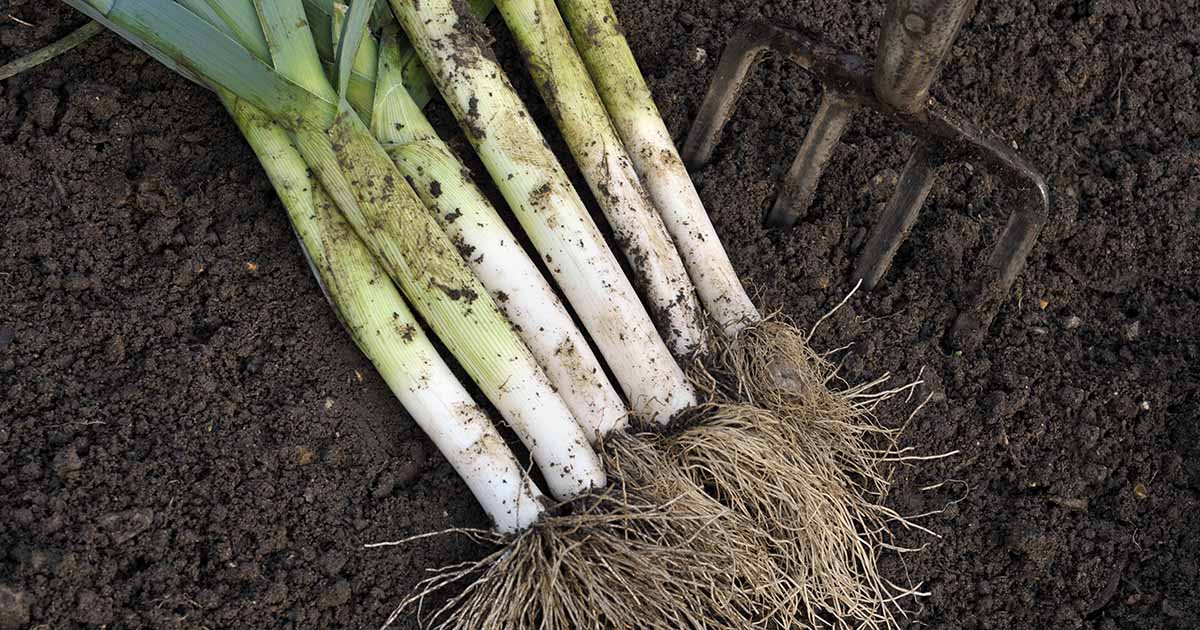Choosing the Right Variety for Your Garden
When deciding how to plant leeks, selecting the right variety is a crucial step in ensuring a successful harvest. With several types to choose from, it’s essential to consider factors like climate, desired harvest season, and personal preference. Summer leeks, such as ‘Lincoln’ or ‘Tadorna’, are ideal for warmer climates and can be harvested in as little as 60 days. Autumn leeks, like ‘Autumn Giant’ or ‘Saint Victor’, thrive in cooler temperatures and take around 120 days to mature. Winter leeks, including ‘Winter Giant’ or ‘Bandit’, are perfect for colder climates and can be harvested in approximately 150 days. To ensure the best results, research the specific growing conditions and space requirements for the variety you choose. By selecting the right leek variety for your garden, you’ll be well on your way to enjoying a bountiful harvest.
Preparing the Soil for Leek Planting
Before learning how to plant leeks, it’s essential to prepare the soil to ensure optimal growth. Leeks require a well-draining, fertile soil with a pH between 6.0 and 7.0. To test the soil pH, use a soil testing kit or send a sample to a laboratory for analysis. If the pH is too low or high, add lime or sulfur accordingly to adjust the pH level. Additionally, incorporate organic matter like compost or well-rotted manure to improve soil structure and fertility. Remove any debris, rocks, or weeds that may compete with the leeks for water and nutrients. Till the soil to a depth of 12 inches to loosen and aerate it, making it easier for the leeks to grow. By preparing the soil properly, you’ll create an ideal environment for your leeks to thrive.
How to Sow Leek Seeds for Optimal Germination
When learning how to plant leeks, sowing seeds correctly is crucial for optimal germination. Start by selecting a location with full sun and well-draining soil. Sow leek seeds thinly, about 1-2 inches apart, and ¼ inch deep in late winter or early spring. Cover the seeds with a fine layer of soil and gently firm the soil to ensure good contact. Water the soil gently but thoroughly, making sure the soil is consistently moist during the germination period. It’s essential to maintain a consistent temperature of around 70°F (21°C) to promote germination. Keep the soil moist but not waterlogged, as this can lead to rot and poor germination. By following these steps, you’ll be well on your way to successfully sowing leek seeds and enjoying a bountiful harvest.
Transplanting Leek Seedlings: Tips for Success
After learning how to plant leeks from seeds, the next crucial step is transplanting leek seedlings. This process requires care and attention to ensure the seedlings thrive in their new environment. Start by hardening off the seedlings by gradually exposing them to outdoor conditions over the course of 7-10 days. This will help them adapt to wind, sun, and temperature fluctuations. When transplanting, space the seedlings 6-8 inches apart, depending on the variety, to allow for proper growth and air circulation. Dig a hole that is the same depth as the pot and twice as wide. Gently remove the seedling from its pot, taking care not to disturb the roots. Place the seedling in the hole, firming the soil around it to prevent air pockets. Water the soil thoroughly to settle the soil and provide enough moisture to support establishment. By following these tips, you’ll be able to successfully transplant your leek seedlings and enjoy a healthy, productive crop.
Leek Care and Maintenance: Watering, Fertilizing, and Pest Control
After learning how to plant leeks, it’s essential to provide ongoing care and maintenance to ensure a healthy and productive crop. Watering is crucial, especially during dry spells. Aim to provide about 1 inch of water per week, either through rainfall or irrigation. Leeks are heavy feeders and will benefit from regular fertilization. Apply a balanced fertilizer once a month, following the manufacturer’s instructions. Additionally, leeks are susceptible to pests and diseases, such as aphids, slugs, and rust. Monitor your plants regularly and take action promptly if you notice any issues. Use organic or integrated pest management methods whenever possible to minimize harm to beneficial insects and the environment. For example, introduce natural predators, such as ladybugs, to control aphid populations. By following these care and maintenance tips, you’ll be able to enjoy a bountiful harvest of delicious and healthy leeks.
Supporting Leek Growth: Staking and Mulching
As leeks grow, they can become top-heavy and prone to wind damage. To prevent this, it’s essential to provide support through staking. Use bamboo stakes or similar materials, gently tying the leek plants to the stake using twine or soft material. This will keep the plants upright and secure. Additionally, mulching around the base of the leeks can help retain moisture, suppress weeds, and regulate soil temperature. Apply a 2-3 inch layer of organic mulch, such as straw or wood chips, around the plants. This will also help to prevent soil erosion and reduce the need for frequent watering. When learning how to plant leeks, it’s crucial to consider the importance of supporting their growth. By staking and mulching, you’ll be able to promote healthy development and maximize your harvest. Remember to check on your leeks regularly, adjusting the stakes and mulch as needed to ensure optimal growth.
Harvesting Leeks: Timing and Techniques
Harvesting leeks at the right time is crucial to ensure optimal flavor and texture. Summer leeks are typically ready to harvest in as little as 60 days, while autumn and winter varieties may take up to 120 days. Check for size by gently digging around the leek with a fork, being careful not to damage the roots. Leeks are ready to harvest when they reach a diameter of about 1 inch. To harvest, dig carefully around the leek, using a fork to loosen the soil. Lift the leek out of the ground, taking care not to damage the roots or the white base of the plant. Trim the roots and any tough green leaves, and store the leeks in a cool, dry place. When learning how to plant leeks, it’s essential to understand the importance of proper harvesting techniques. By following these guidelines, you’ll be able to enjoy a bountiful harvest of delicious and healthy leeks.
Troubleshooting Common Leek Planting Issues
Despite careful planning and attention, leek planting can sometimes be affected by pests, diseases, and weather-related issues. To ensure a successful harvest, it’s essential to be aware of these potential problems and know how to address them. One common issue is pests, such as slugs and snails, which can damage leek leaves and stems. To combat this, use copper tape or crushed eggshells around the plants to deter these pests. Another issue is leek rust, a fungal disease that can cause yellowing leaves and reduced growth. To prevent this, ensure good air circulation around the plants, remove any infected leaves, and apply a fungicide if necessary. Weather-related issues, such as excessive rain or drought, can also impact leek growth. To mitigate this, ensure the soil is well-draining, and consider using row covers or irrigation systems to regulate water levels. By being aware of these potential issues and taking proactive steps, you’ll be able to overcome common leek planting problems and enjoy a healthy, thriving crop. When learning how to plant leeks, it’s crucial to be prepared for any challenges that may arise, and with these troubleshooting tips, you’ll be well-equipped to handle any issues that come your way.





:max_bytes(150000):strip_icc()/growing-leeks-in-the-vegetable-garden-1403462-01-beb0fa1c407d4a61adc16dbc4291799f.jpg)
